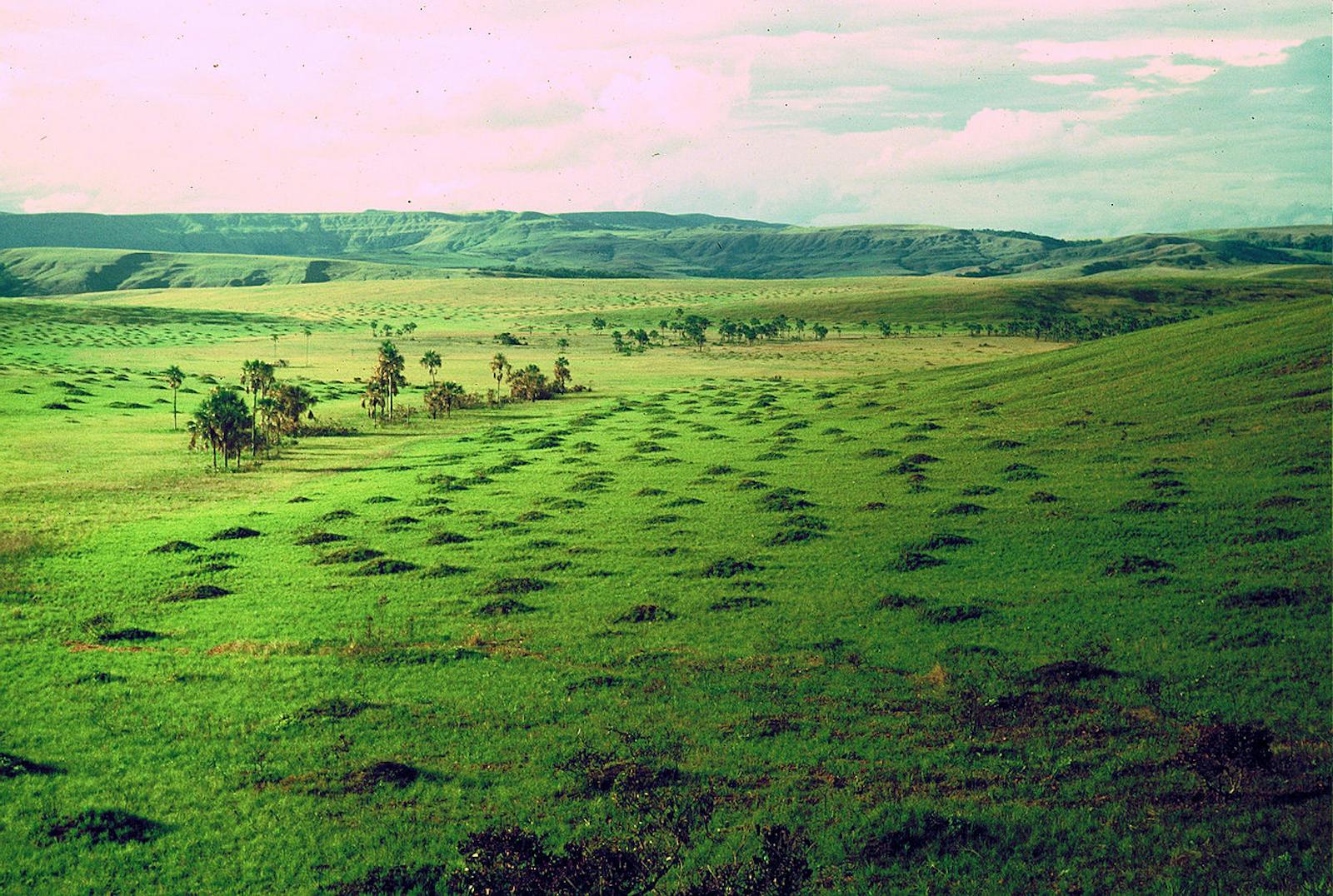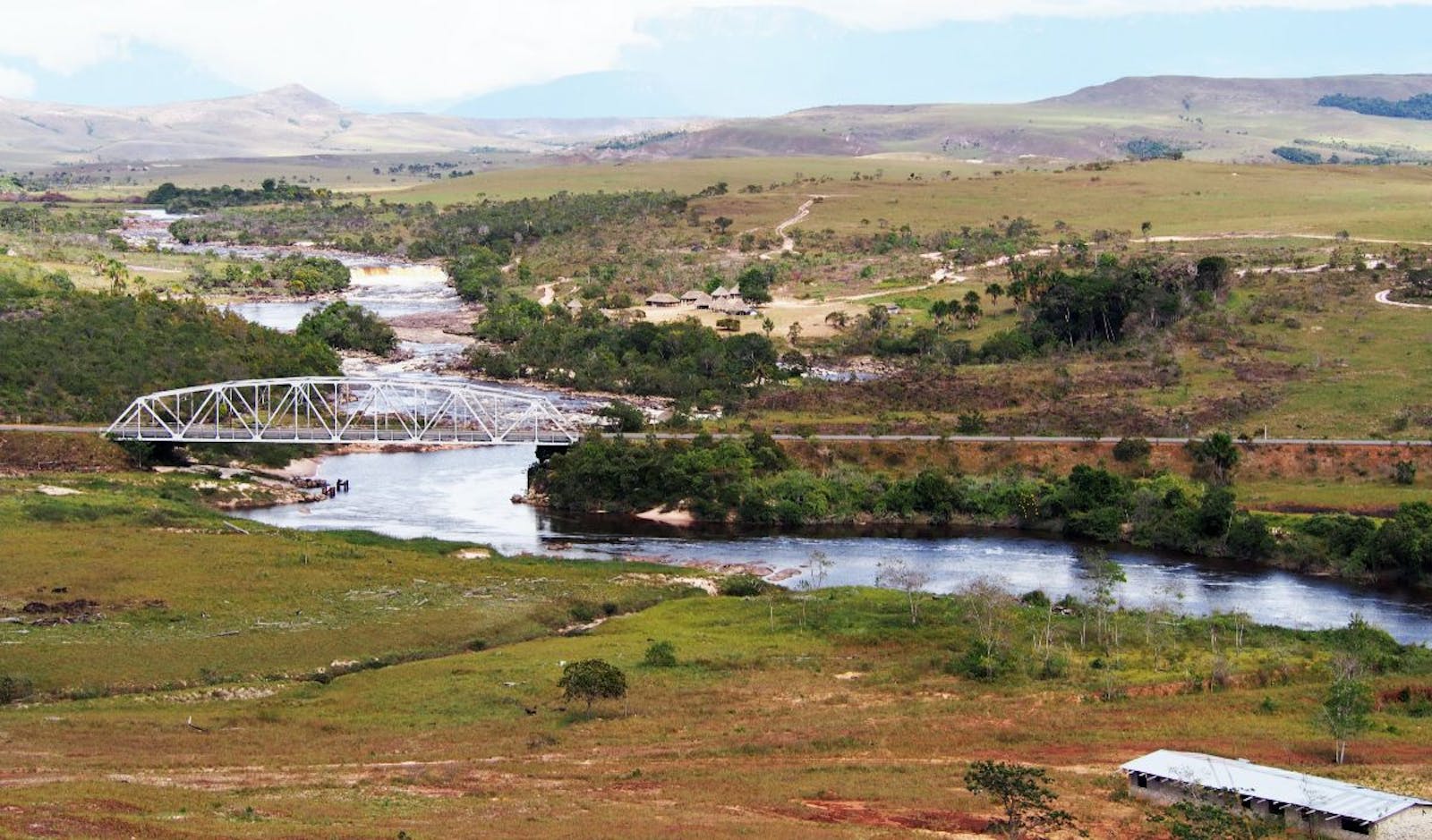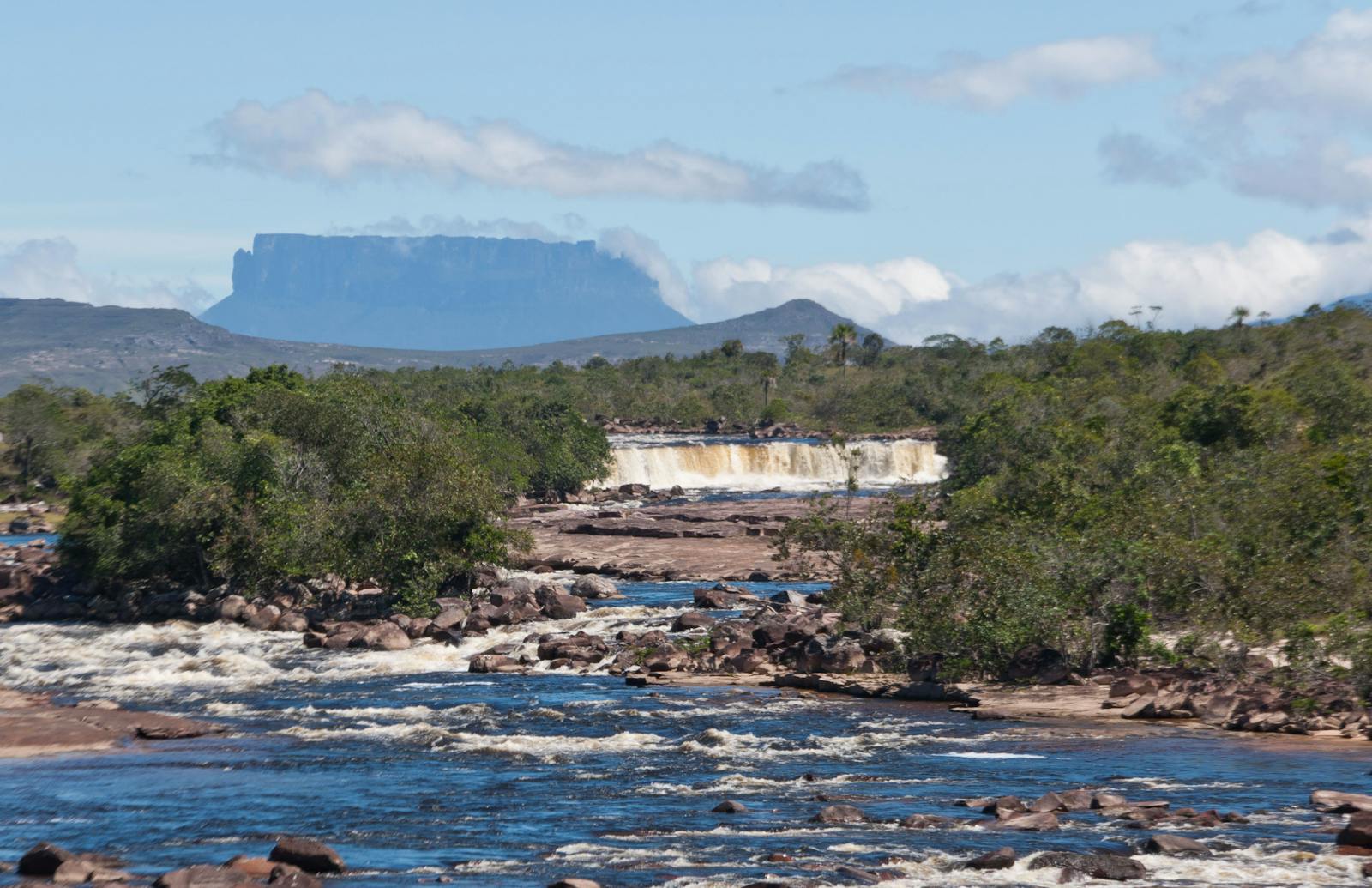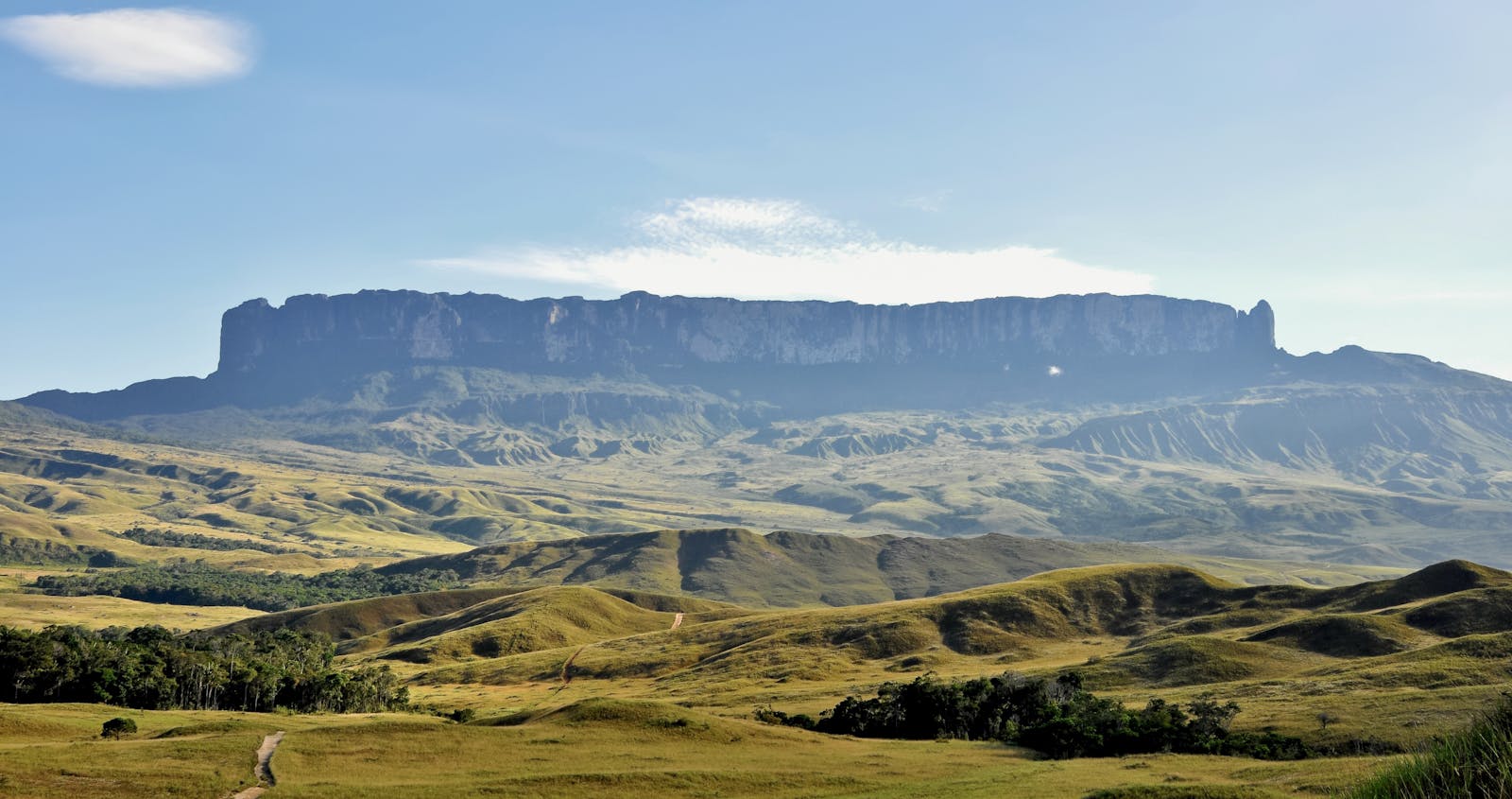Guianan Savanna
The ecoregion’s land area is provided in units of 1,000 hectares. The protection goal is the Global Safety Net (GSN1) area for the given ecoregion. The protection level indicates the percentage of the GSN goal that is currently protected on a scale of 0-10.
Bioregion: Guianan Forests & Savanna (NT21)
Realm: Southern America
Ecoregion Size (1000 ha):
10,520
Ecoregion ID:
570
Conservation Target:
82%
Protection Level:
6
States: Brazil, Guyana, Venezuela, Suriname
The critically endangered Rio Branco antbird has been recorded in Brazil and Guyana, including the Guianan Savanna ecoregion. This unique savanna spans across the southwestern Guiana Shield near the mouth of the Rio Branco, where it intermingles with the tepui massifs in the north creating dramatic landscapes which inspired “The Lost World”.
The Rio Branco antbird prefers staying close to the river systems and the surrounding gallery forests that traverse the savannas. Males have a striking black plumage and their song combines long clear notes and short drones. The species is almost entirely restricted to the Rio Branco River and its tributaries, which are critically important for their survival and for many endemic aquatic species. The Rio Branco antbird is a good indicator of ecosystem health.
%20prefers%20to%20stay%20in%20the%20darkness%20and%20safety%20of%20the%20thickest%20scrubs%20of%20the%20amazonian%20forest%2C%20where%20it%20is%20endemic%20to%20Peru.%20Photo%2026962753%20%C2%A9%20Joan%20Egert%20_%20Dreamstime.com.jpg)
The flagship species of the Guianan Savanna ecoregion is the Rio Branco antbird. Image credit: Creative Commons
This ecoregion occurs as three distinct patches:
- the largest, Gran Sabana, spanning northern Brazil, southeastern Venezuela, and southeastern Guyana;
- a smaller patch, Paru Sabana, bordering northern Brazil along the Paru River and extending over the watershed into southern Suriname, known as the Sipaliwini Savanna;
- the smallest and most elongate outlier, occuring in eastern Brazil north of the Amazon extending from near Macapa to near Calcoene.
Average temperatures are around 20°C and average rainfalls are between 2,000-3,000 mm. The ecoregion is distinguished by extensive savannas and scrubby vegetation. However, there are some isolated patches of forest as well as gallery forest along streams throughout the region. Recurrent fires and extremely poor soils are the most important factor in the advance of savannas in place of forest. Common species include the evergreen tree Humiria balsamifera, the flowering plant Bonnetia sessilis, the sedge Bulbostylis paradoxa, West Indian bluestem grass, and moriche palm.
The Gran Sabana patch is recognized as an important plant refuge and dispersal center, with several reported endemic species. In Suriname, despite savannas only covering 1% of the land surface, 800 species of plant have been recorded, which is 20% of the country’s flora. These savanna patches may be considered a biodiversity hotspot for plant diversity.
However, most of the endemic animal species in the area are found in the highlands of the Tepui Mountains or in the Moist Forests ecoregions. Specific to the savanna ecoregion include two endemic species of frog. Native bird species include the endangered sun parakeet and great-billed seed finch and the critically endangered Rio Branco antbird and hoary throated spinetail. Native mammals include the endangered giant otter and the critically endangered black-bearded saki.
The Gran Sabana is completely protected by the Canaima National Park. Other portions of the ecoregion are protected by the Mount Roraima National Park and Tucumaque Indigenous Park in Brazil. There are reserves that protect sections of each of the 8 distinct savannas in Suriname: Wanekreek, Copi, Boven-Coesewijne, Brinckheuvel, Central Suriname Nature Reserve, and Sipaliwini Nature Reserve. However, more effective controls and enforcement of the regulations are needed in to ensure the longevity of these protected areas.
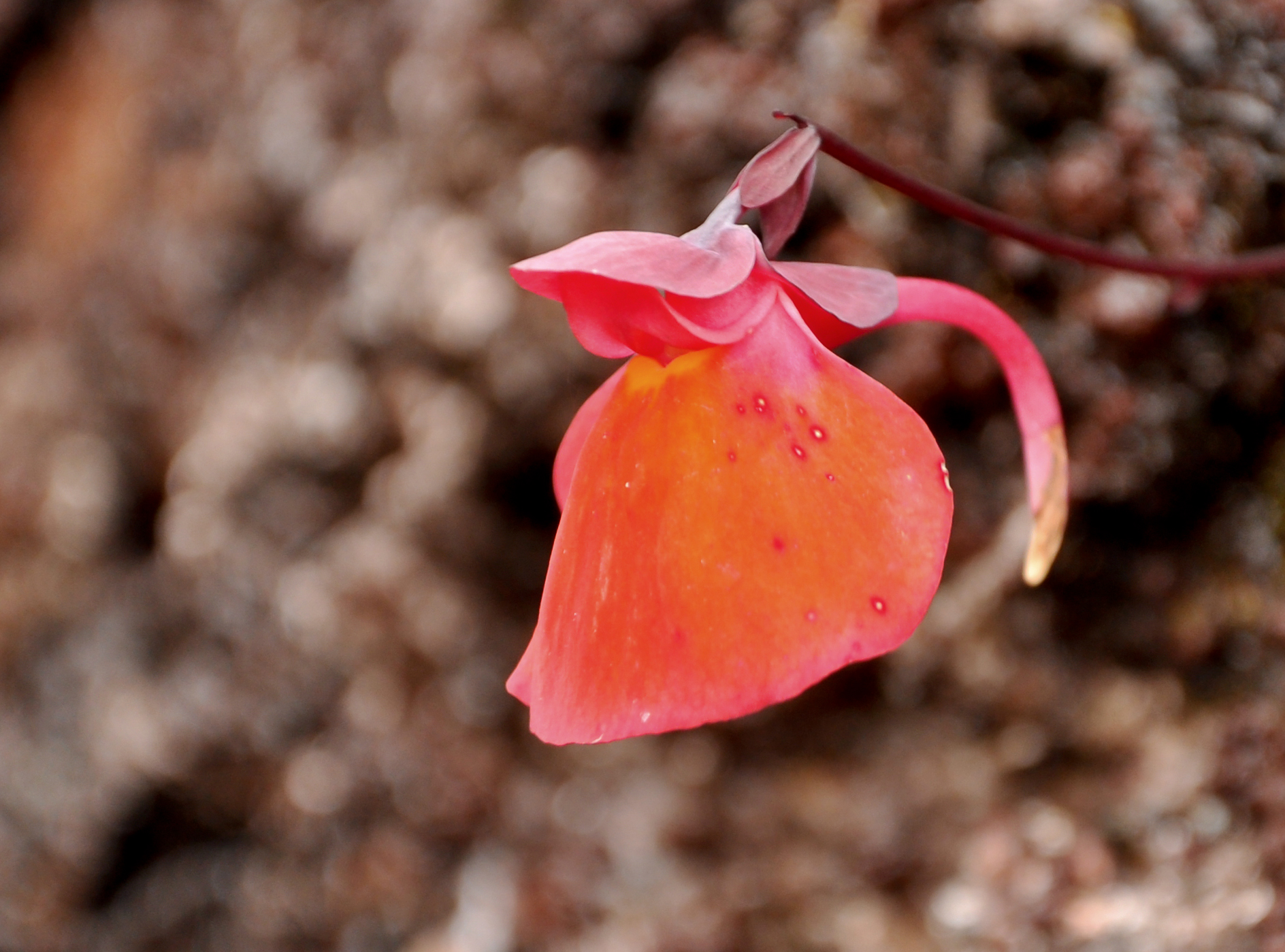
Utricularia Quelchii Mount Roraima Eco. Image credit: Courtesy of Paolo Costa Baldi
Degradation of the remaining forests into grasslands due to natural and human-induced fires is the largest threat. Habitat fragmentation caused by fires results in the gradual extinction of species that cannot adapt to the degraded habitats. The loss of vegetation cover and soil erosion have caused streams to become intermittent during dry seasons. Amphibians have declined throughout the region as a result.
Gold and diamond mines are found along the region and cause severe indirect environmental impacts, including mercury pollution, an increase in the sediment load of the rivers, overhunting by miners, and the frequent fires. Extensive tourism present in Venezuelan savannas. The construction of a paved road from La Escalera to Santa Elena de Uairén has caused several problems including littering, illegal gathering of plants and animals, and fires.
The priority conservation actions for the next decade are to: 1) instill strict fire prevention measures; 2) regulate the mining industries’ pollutant output; and 3) increase protected area enforcement capacity.
Citations
1. Bonaccorso, E. 2018. South America: Northern Brazil, Guyana, and Venezuela. https://www.worldwildlife.org/ecoregions/nt0707 Accessed November 27, 2018.
2. Steyermark, J.A.1979. Plant refuge and dispersal centres in Venezuela: their relict and endemic element. Pages 185-221 in K. Larsen and L.B. Holm-Nielsen (editors). Academic Press. Great Britain, London.
3. Huber, O.1997d. Pantepui Region of Venezuela. Pages 308-311 in S.L.D. Davis, V.H. Heywood, O. Herrera-MacBryde, J. Villa-Lobos and A.C. Hamilton (editors), Centres of plant diversity: a guide and strategy for their conservation. Vol. 3. The Americas. World Wildlife Fund for Nature (WWF) y The World Conservation Union-IUCN. IUCN Publications Unit, Cambridge, U.K.
4. BirdLife International 2018. Cercomacra carbonaria (amended version of 2017 assessment). The IUCN Red List of Threatened Species 2018: e.T22701686A128257225. Accessed November 27, 2018.
